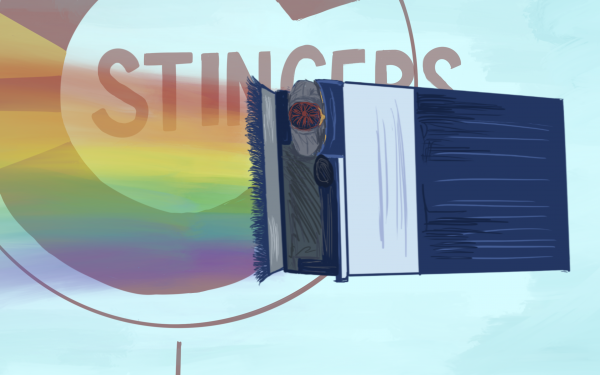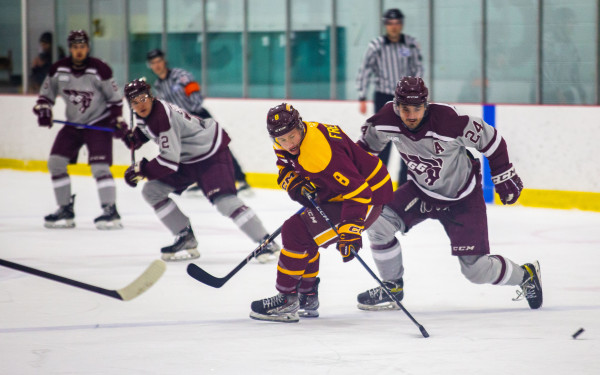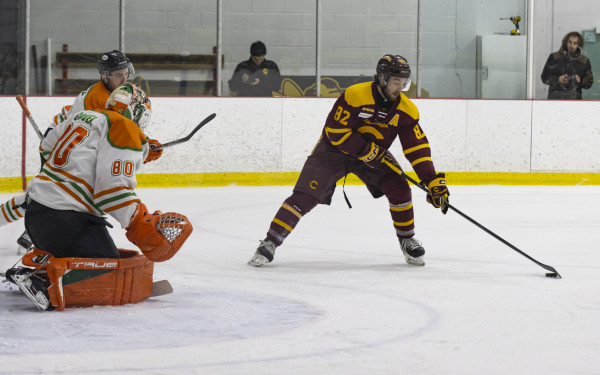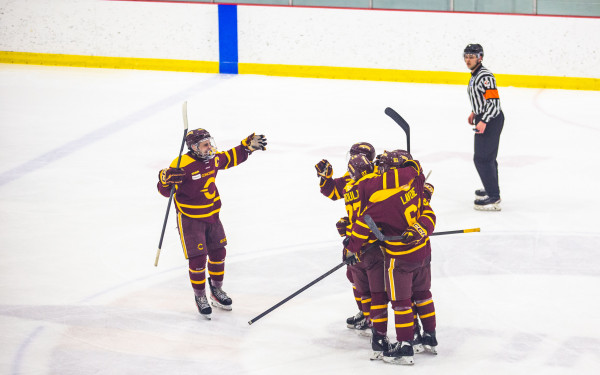Shut Up and Dribble: It’s time for hockey to get real about injuries
From the top down, the NHL still refuses to admit the damage hockey can do
The year was 2015 and the New York Islanders-Pittsburgh Penguins rivalry was heating up in game five of their playoff series.
Rangers forward Mats Zuccarello was out in front of the Penguins’ net jostling for space when a heavy slapshot hit the side of his head, bouncing right off his helmet. He skated straight for the bench as play continued without him, his head ringing dully. Despite the injury, his first thought, according to an interview he did later with Sports Illustrated, was “I can’t back check here.”
Zuccarello waited in a medical room until the first period was done—about five minutes of play. It wasn’t until Rangers head coach Alain Vigneault realized Zuccarello couldn’t form words that he was rushed to the hospital, where he was diagnosed with a fractured skull, as well as a contusion and bleeding in his brain.
Zuccarello sat patiently in the medical room of a hockey arena for five full minutes of play while his ability to speak faded, his entire right side went numb, and his skull leaked blood. And by the start of the 2015-16 season, he was back on the ice for the Rangers. Happy ending—right?
Well, here’s another vintage story. On April 5, 1990, Pat LaFontaine suited up for the New York Islanders vs. New York Rangers game. While he was targeted by other players for a majority of the matchup, the career-defining hit didn’t come until late in the third period: two players collided with him in quick succession, and LaFontaine’s head hit the ice hard. He was unconscious for almost a full minute.
There are a number of things to be said about this incident, but this quote from then-Rangers defenceman Randy Moller in a The Hockey News article stands on its own: “We weren't going out there trying to kill Patty. But if we had an opportunity to be physical, hit him, we were going to take that opportunity. We knew that if we were going to be successful, we would have to neutralize him.”
In this case, “neutralize” apparently meant hospitalize.
There’s an interesting phenomenon in hockey reporting when it comes to injuries— particularly head injuries. Article after article on player safety and dangerous injuries tout a line best encapsulated by this quote from Blackout Dallas: “By no means am I saying that physicality has no place in hockey. The sport wouldn’t be the same without its passion, checks, and fights.”
Even the article cited earlier on Zuccarello’s injury, while emphasizing the gravity of the injury, applauded him for making it back on the ice in just a few months’ time. There is immense hesitation in hockey-centric spaces to condemn violence. It’s easy to say, “If it causes dangerous injury? Penalize it,” as Mahima Masih of the Blackout Dallas article wrote. But when it’s those very legal plays and lauded fistfights that lead to injuries, we need somewhere else to turn.
This is made even more complicated by the NHL’s stance on violence—particularly those held by league commissioner Gary Bettman and the Department of Player Safety (DoPS) head George Parros.
Bettman’s opinion has once again come to controversial light after the death of Chris Simon, a former NHL enforcer, at age 52. Simon’s family believes that he was suffering from chronic traumatic encephalopathy (CTE), which contributed to his death. Bettman, however, has said in the past that he doesn’t believe “there has been any documented study that suggests that elements of [hockey] result in CTE.”
CTE is a neurodegenerative disease caused by repeated blows to the head. It was a hot topic in the sphere of American football a few years back, and now hockey is jumping through some very similar hoops to try and deny its existence.
The NHL is particularly troubled by its former enforcers, a now-defunct role defined basically by a player’s ability to get into as many fistfights as possible. The trouble is that former enforcers tend to die about a decade earlier than their non-enforcer NHL peers, and are more likely than their peers to die by suicide or drug overdose. Notably, deaths by suicide and drug overdose are also commonly linked to CTE.
In answer to a question on March 20, 2024 about Simon’s passing, Bettman insisted that the NHL was waiting to see “what the medical experts tell us.” On the same day, NHL deputy commissioner Bill Daly denied any link between multiple blows to the head—which are unavoidable in NHL hockey—and CTE.
Multiple studies have already shown the connection between hockey and CTE, including one by Boston University that suggested that each additional year of hockey played by an individual could increase their chance of developing CTE by as much as 23 per cent. Bettman might be content with his head in the sand, but it will likely only continue to hurt players down the line.
What this does tell us, though, is that at its highest levels, the NHL isn’t prepared to admit to the damage done by the violence inherent in their sport.
This denial is compounded by just how lenient the DoPS is with intentional injuries. In fact, I would be remiss if I didn’t mention George Parros’ line of hockey wear that included MAGA-themed hats and t-shirts reading, “Make Hockey Violent Again.”
But if the players are the ones both perpetuating and being damaged by the violence of hockey, and the league itself refuses to admit that violence is a problem, what can be done? Someone has to take on the responsibility of making hockey a safer sport.
This is not an individual problem. The blame can’t be placed at the feet of Randy Moller, George Parros, or even Gary Bettman. It can’t be laid on reporters who shy away from condemning violence, either, at least not entirely. These problems of violence inherent to the sport of hockey, of minimizing injury in order to glorify the game of hockey, and of denying the link between the violence of hockey and long-term life-changing injury, are cultural.
The NHL—and the hockey world at large—has built for itself a culture dependent upon violence. Violence in hockey is a measure of grit and determination. When a player fights, they make a statement for their team, even if they lose. When a player is injured, whether or not they play through their injury is seen as a personal choice, and one that reflects that player’s dedication to the sport. It’s Sergei Fedorov playing through broken ribs for the Detroit Red Wings back in 1997. It’s valuing the success of a sport above the health of a human being.
This problem has ten-year-olds attending summer leagues and banging on the glass, shouting at the players to fight. This problem had Matthew Tkachuk playing through a broken sternum during the Florida Panthers’ doomed playoff run in 2023. This problem brought the back check to the forefront of Mats Zuccarello’s mind as he skated for the bench with a fractured skull.
And this problem cannot be solved without the cooperation of everyone within the culture that perpetuates it.

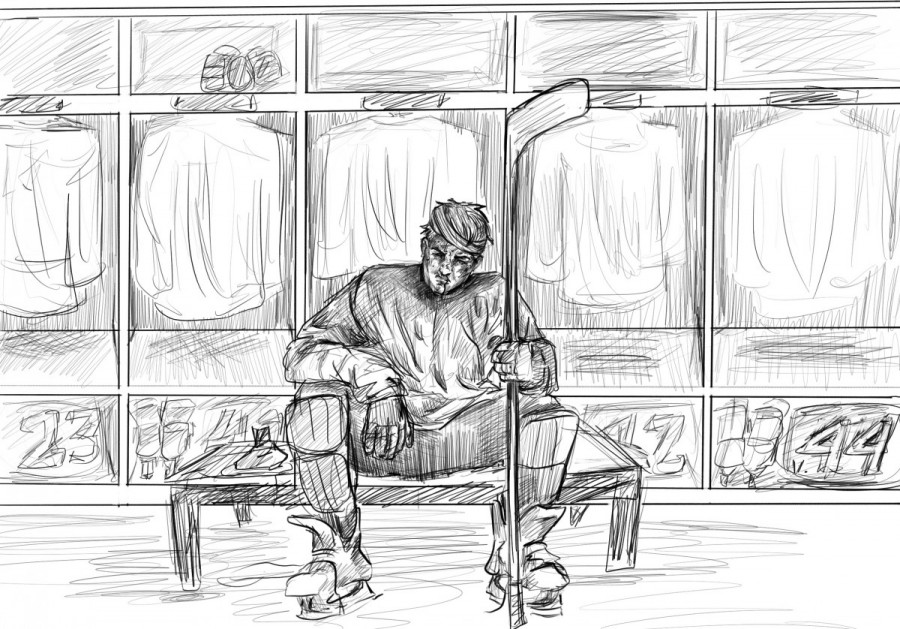
_600_832_s.png)

